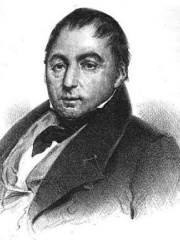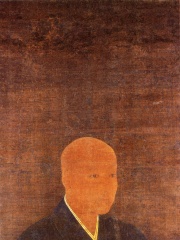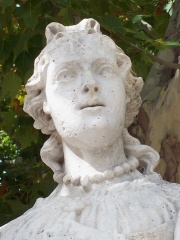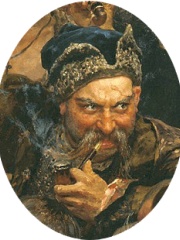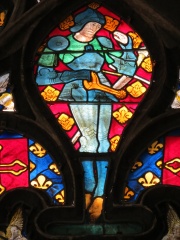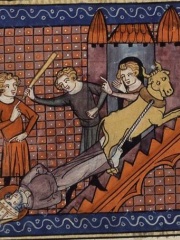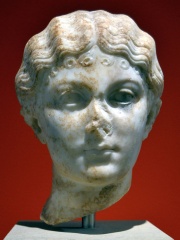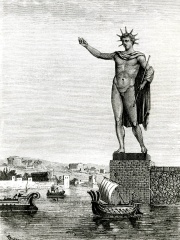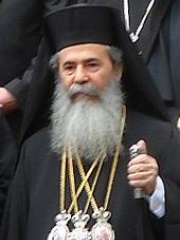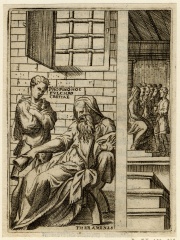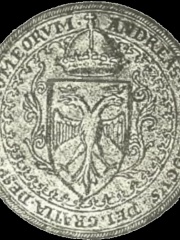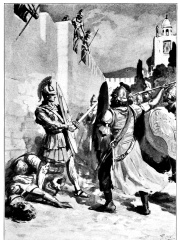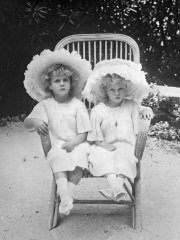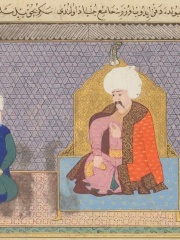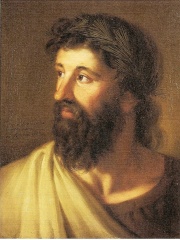POLITICIAN
Antilochus
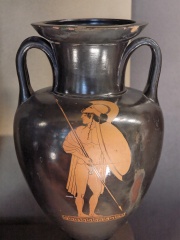
 Antilochus
Antilochus
In Greek mythology, Antilochus (; Ancient Greek: Ἀντίλοχος Antílokhos) was a prince of Pylos and one of the Achaeans in the Trojan War. He was the youngest prince to command troops. Read more on Wikipedia
His biography is available in 27 different languages on Wikipedia. Antilochus is the 5,034th most popular politician (up from 5,751st in 2024), the 298th most popular biography from Greece (up from 337th in 2019) and the 125th most popular Greek Politician.
Memorability Metrics
Page views of Antilochus by language
Among POLITICIANS
Among politicians, Antilochus ranks 5,034 out of 19,576. Before him are Kim Kyu-sik, Emperor Go-Uda, Pat Brown, Kigeli V of Rwanda, Jacques-Charles Dupont de l'Eure, and Salmaan Taseer. After him are Charles the Younger, Emperor Kōgon, Sancha of León, Ivan Sirko, John VIII, Count of Vendôme, and Leo Tindemans.
Most Popular Politicians in Wikipedia
Go to all RankingsKim Kyu-sik
1881 - 1950
HPI: 66.53
Rank: 5,030
Emperor Go-Uda
1267 - 1324
HPI: 66.53
Rank: 5,031
Pat Brown
1905 - 1996
HPI: 66.53
Rank: 5,032
Kigeli V of Rwanda
1936 - 2016
HPI: 66.52
Rank: 5,033
Jacques-Charles Dupont de l'Eure
1767 - 1855
HPI: 66.52
Rank: 5,034
Salmaan Taseer
1944 - 2011
HPI: 66.52
Rank: 5,035
Antilochus
HPI: 66.52
Rank: 5,036
Charles the Younger
772 - 811
HPI: 66.52
Rank: 5,037
Emperor Kōgon
1313 - 1364
HPI: 66.52
Rank: 5,038
Sancha of León
1013 - 1067
HPI: 66.52
Rank: 5,039
Ivan Sirko
1610 - 1680
HPI: 66.51
Rank: 5,040
John VIII, Count of Vendôme
1428 - 1477
HPI: 66.51
Rank: 5,041
Leo Tindemans
1922 - 2014
HPI: 66.51
Rank: 5,042
In Greece
Among people born in Greece, Antilochus ranks 298 out of 1,024. Before him are Lycurgus of Athens (-390), Saturnin (300), Julia Livilla (18), Alcamenes (-500), Katina Paxinou (1900), and Chares of Lindos (-400). After him are Theaetetus (-417), Dimitri Mitropoulos (1896), Georgios Papandreou (1888), Agis II (-490), Machaon (null), and Patriarch Theophilos III of Jerusalem (1952).
Others born in Greece
Go to all RankingsLycurgus of Athens
POLITICIAN
390 BC - 324 BC
HPI: 66.69
Rank: 292
Saturnin
RELIGIOUS FIGURE
300 - 300
HPI: 66.67
Rank: 293
Julia Livilla
POLITICIAN
18 - 42
HPI: 66.64
Rank: 294
Alcamenes
SCULPTOR
500 BC - 400 BC
HPI: 66.62
Rank: 295
Katina Paxinou
ACTOR
1900 - 1973
HPI: 66.62
Rank: 296
Chares of Lindos
SCULPTOR
400 BC - 280 BC
HPI: 66.58
Rank: 297
Antilochus
POLITICIAN
HPI: 66.52
Rank: 298
Theaetetus
MATHEMATICIAN
417 BC - 369 BC
HPI: 66.49
Rank: 299
Dimitri Mitropoulos
CONDUCTOR
1896 - 1960
HPI: 66.46
Rank: 300
Georgios Papandreou
POLITICIAN
1888 - 1968
HPI: 66.44
Rank: 301
Agis II
POLITICIAN
490 BC - 401 BC
HPI: 66.33
Rank: 302
Machaon
POLITICIAN
HPI: 66.29
Rank: 303
Patriarch Theophilos III of Jerusalem
RELIGIOUS FIGURE
1952 - Present
HPI: 66.24
Rank: 304
Among POLITICIANS In Greece
Among politicians born in Greece, Antilochus ranks 125. Before him are Theramenes (-450), Alexander I of Epirus (-362), Andreas Palaiologos (1453), Leonnatus (-356), Lycurgus of Athens (-390), and Julia Livilla (18). After him are Georgios Papandreou (1888), Agis II (-490), Machaon (null), Princess Margarita of Greece and Denmark (1905), Piri Mehmed Pasha (1458), and Timoleon (-411).
Theramenes
450 BC - 403 BC
HPI: 66.75
Rank: 119
Alexander I of Epirus
362 BC - 331 BC
HPI: 66.74
Rank: 120
Andreas Palaiologos
1453 - 1502
HPI: 66.70
Rank: 121
Leonnatus
356 BC - 322 BC
HPI: 66.70
Rank: 122
Lycurgus of Athens
390 BC - 324 BC
HPI: 66.69
Rank: 123
Julia Livilla
18 - 42
HPI: 66.64
Rank: 124
Antilochus
HPI: 66.52
Rank: 125
Georgios Papandreou
1888 - 1968
HPI: 66.44
Rank: 126
Agis II
490 BC - 401 BC
HPI: 66.33
Rank: 127
Machaon
HPI: 66.29
Rank: 128
Princess Margarita of Greece and Denmark
1905 - 1981
HPI: 66.24
Rank: 129
Piri Mehmed Pasha
1458 - 1532
HPI: 66.23
Rank: 130
Timoleon
411 BC - 337 BC
HPI: 66.19
Rank: 131




